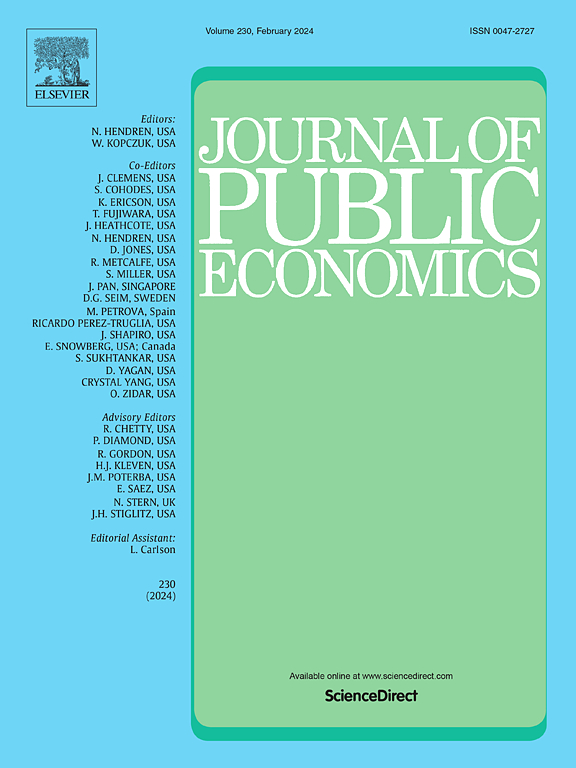财富,礼物,以及临终时的遗产规划
IF 3.4
1区 经济学
Q1 ECONOMICS
引用次数: 0
摘要
我们表明,在死前给继承人的礼物数额巨大,而且对税收反应强烈。利用来自荷兰的代际关联的行政数据,并利用死亡时间的变化,我们发现,有孩子的单身人士(包括寡妇)在预期死亡时将其财富的10%左右转移给了他们的孩子。这几乎完全是免税赠与的形式。我们利用赠与税时间表和遗产税改革的转折点上的聚集,估计了赠与税和财富对税收的弹性,发现避税至少占这种临终赠予的一小部分。获得税收优惠的能力意味着收入最大化的统一继承税率最多为37%。将临终赠予和遗赠的税率统一,将使来自单身人士的税收增加10%。本文章由计算机程序翻译,如有差异,请以英文原文为准。
Wealth, gifts, and estate planning at the end of life
We show that gifts made to heirs before death are substantial and highly responsive to taxation. Using intergenerationally-linked administrative data from the Netherlands and exploiting variation in the timing of death, we find that single people (including widows) with children transfer around 10 % of their wealth to their children in anticipation of death. This is almost entirely in the form of tax-exempt gifts. Exploiting bunching at kink points in the gift tax schedule and a reform to inheritance taxation, we estimate elasticities of gifts and wealth to taxation and find that tax-avoidance accounts for at least a significant minority of this deathbed giving. The ability to make tax-favoured gifts means that the revenue-maximising flat inheritance tax rate is at most 37 %. Equalising the tax rate on deathbed gifts and inheritances at death would increase revenues raised from singles by 10 %.
求助全文
通过发布文献求助,成功后即可免费获取论文全文。
去求助
来源期刊

Journal of Public Economics
ECONOMICS-
CiteScore
14.10
自引率
2.00%
发文量
139
审稿时长
70 days
期刊介绍:
The Journal of Public Economics aims to promote original scientific research in the field of public economics, focusing on the utilization of contemporary economic theory and quantitative analysis methodologies. It serves as a platform for the international scholarly community to engage in discussions on public policy matters.
 求助内容:
求助内容: 应助结果提醒方式:
应助结果提醒方式:


